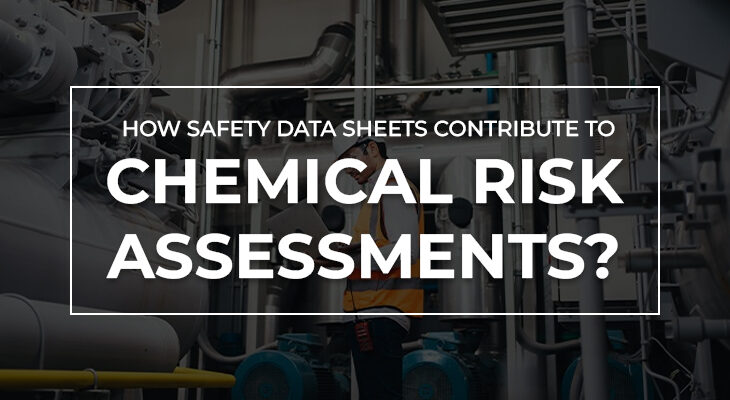
Safety data sheets (SDS) offer valuable details regarding chemical products, aiding users in risk assessments. They outline the potential hazards associated with the chemicals and provide instructions on their safe handling, storage, and emergency procedures in case of accidents. Hence, in this blog we will know how safety data sheets contribute to chemical risk assessments.
How SDS Helps In Chemical Risk Assessments?
SDS contains detailed chemical properties, composition, handling, storage, and disposal information. This data enables employers and workers to assess the potential risks of specific substances. From physical and chemical properties to toxicity levels, flammability, and environmental impact, SDS provides a comprehensive understanding of the hazards of chemicals.
An SDS that adheres to the WHS Regulations comprises 16 distinct sections, each containing specific details regarding the chemical’s usage, handling, storage, transportation, and disposal.
Section 1 – Product Identification
This section helps identify the product, such as trade name, manufacturer’s contact details, importers who supplied the product and the phone number of the individuals to be contacted during an emergency.
Section 2 – Identification of Hazards
Provides information regarding the potential risks, including health and physical hazards associated with the chemical. It helps in the evaluation of workers’ well-being and safety and the environment. The details presented in this section should align with the information provided on the label and may contain more information than displayed on the label.
Section 3 – Composition & Information About Ingredients
When the chemical is a mixture, this section should contain details regarding the hazardous ingredients present in the mixture, including their identity and proportions.
Section 4 – First-aid measures
Describes the necessary first aid measures to be taken in case of an accident.
Section 5 – Fire Suppression Measures
Provides detailed guidance for combating fires involving the chemical, outlining the optimal extinguishing agents and additional precautions to ensure safety.
Section 6 – Response to Unintentional Release
Outlines the necessary steps to be taken in the event of an unintended release or spillage while handling chemicals, aiming to minimize any negative impact on individuals, assets, and the surrounding environment.
Section 7: Proper Handling & Storage Measures For Chemicals
This section provides comprehensive guidelines to mitigate potential hazards to individuals, assets, and the surrounding environment during the handling and storage of chemicals.
Section 8: Managing Exposure & Ensuring Personal Protection.
It details various control measures, including engineering controls, recommended exposure standards, and guidance on the necessary personal protective equipment (PPE) for minimizing exposure risks.
Section 9: Substance Physical & Chemical Characteristics
This section encompasses aspects such as the substance’s appearance, odor, pH, flash point, melting/boiling point, and other pertinent physical data.
Section 10 – Stability & Reactivity
This section provides information on potential hazardous reactions that may arise under specific conditions. It also includes details regarding materials that are incompatible with the chemical.
Section 11 – Toxicological Properties
This section provides in-depth information regarding the toxicological characteristics of the chemical substance.
Section 12 – Ecological Properties
Offers comprehensive details about the environmental characteristics and potential risks associated with the chemical substance.
Section 13 – Disposing of Chemicals After Use
It outlines the necessary steps and guidelines to ensure proper handling and environmental responsibility in chemical waste management.
Section 14 – Transportation Details
This section provides essential classification information, including the UN number, transport hazard classes, and packing groups. These details are relevant for transporting the chemical via road, rail, sea, or air.
Section 15 – Regulatory Guidance
Offers guidance regarding international or national regulatory information pertinent to the chemical, including the Montreal Protocol (addressing ozone-depleting substances), the Stockholm Convention (addressing Persistent Organic Pollutants), Poison scheduling, or any other relevant Australian restrictions, notifications, or licensing obligations.
Section 16 – Additional Or Relevant Information
This section encompasses any further pertinent information about the compilation of the safety data sheet. It may include the preparation date, a comprehensive key or legend elucidating abbreviations, acronyms, and references utilized.
Reach out today to discuss with a Sunstream expert for SDS services, or conflict mineral compliance expert to streamline your operation and supply chain compliance.




 +1.585.935.7123
+1.585.935.7123 +91-804-148-6861
+91-804-148-6861